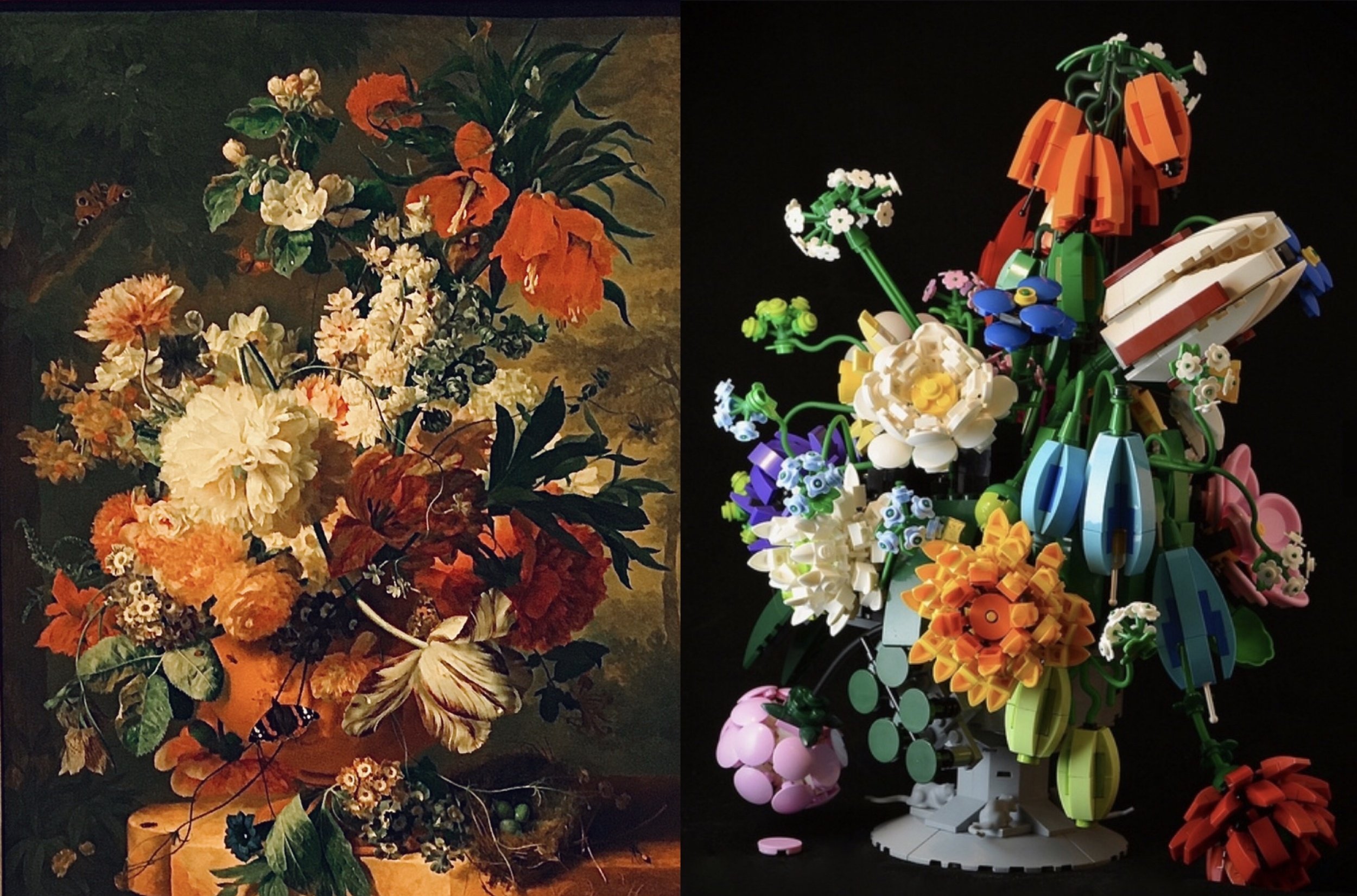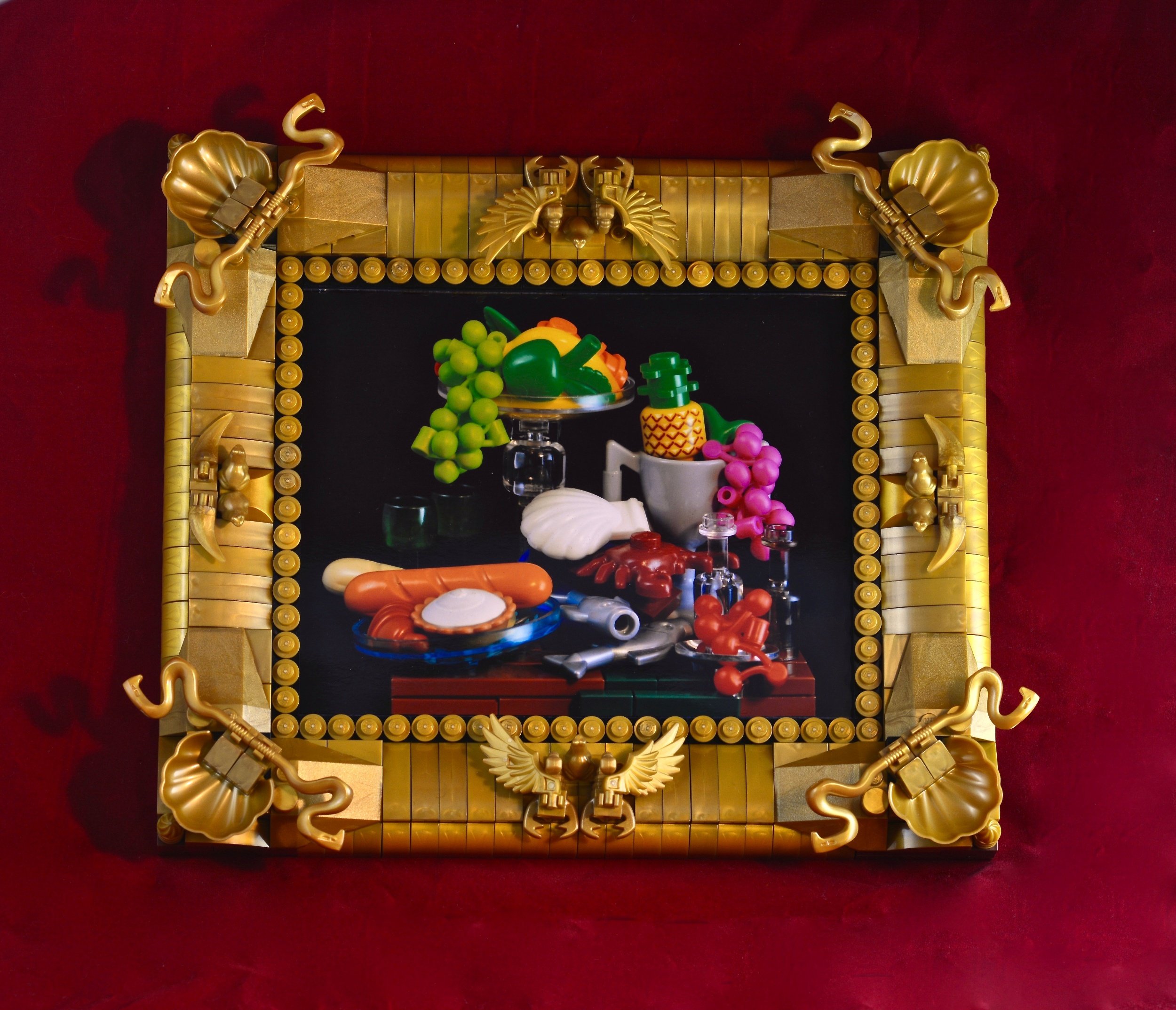Nordic Art: An Interview with Birgitte Jonsgard
/Our LEGO community is full of creative builders and we all have our own favorites. One of mine is definitely Birgitte Jonsgard. I love her builds for her attention to details but also the overall dramatic effect. The motivations for her builds inspire me, but also her unique Nordic feel.
Join me as we get to know more about Birgitte and her builds.
Malin: Welcome to this interview Birgitte, I would love to know more about you! Would you like to start by giving us a short description about you and how you started with the LEGO hobby?
Birgitte: LEGO was one of my favourite toys as a child, but at the age of twelve I stopped building and never thought of using LEGO after that. Ten years ago I saw some photos on the internet of architecture MOCs made by members of the Norwegian LUG Brikkelauget. I didn’t know there was a LEGO community, and that my formerly beloved toy could be used in so many different ways. The boxes with bricks were still in my mother’s attic, and I found them and started building. Then I discovered BrickLink, and now the basement is full of bricks. To pay for the bricks, I teach biology. I live in Western Norway.
Flowers
Malin: Please tell us more about this fantastic flower display! What do you like the most about it?
Birgitte: When creating the material for the LEGO Adventure Books, I had to work a lot with the quality of my photos. After that, photography became a large part of my hobby. This model is made mainly to produce a picture with the look of a flower painting from around the year 1700. As with these paintings, the composition of colour is the most important thing to get right, and I spent some hours moving blobs of different colours around, reducing and increasing their size. It’s like a puzzle where you don’t know the solution, but when it’s done right you recognize it.
Food
Malin: These “paintings” are so much fun! What inspired you to build these?
Birgitte: I built the food paintings with the same idea as the flowers, but they are much easier builds. They are meant to look like paintings from a distance, but close up you see that they are plastic toy pieces. The first painting was made first. I found both picture and frame rather unimpressive, so I made a better version. In the new frame, I tried to include as many animals as possible.
Buildings
Malin: You also have several builds with houses, tell us about these, and are you building more houses in the future?
Birgitte: I like building things ”in the style of” - like the still lifes - not making models that copy a particular object, but try to capture the essence or “for instance” of an architectural period. Sometimes, I fall into rabbit holes. I look at thousands of pictures, read about the subject, and if I’m lucky, I have a decent model appear on the other end. My building has gone a bit artsy-fartsy lately, and I’m bored by that. The current build is a standard, grey - ye olde LEGO castle - and it’s good fun.
Ravens
Malin: Hugin and Munin are Odin’s two ravens in Norse mythology. Is mythology something that interests you, and will we see more build inspired by this?
Birgitte: I’m a lazy builder and put bricks together in the easiest possible way, as long as it makes approximately the right shape or structure. With interesting colour combinations added, simple models can look pretty good. The ravens were a challenge to do things differently. Not leaning on colour, just shape and structure, and impossible to build in a simple way. It was just obvious that they were Hugin and Munin. Norse mythology is part of our history and culture, but I’m not particularly interested in it.
Stave Church
Malin: This wonderful Stave Church was the build that I first saw from you. It's an amazing build in black that still has so many details. What was the hardest part to build?
Birgitte: With buildings, I try to make them as small as possible without losing too much detail and keeping the proportions right. The most complicated part was the lower roofs. They must have the exact right inclinations, and the corners where they meet have some very LEGO-unfriendly angles. These angled edges are made with lots of small plates with their jaggedness camouflaged with long tiles.
Malin: Who is that, inspecting the church?
Birgitte: Sometimes, when making buildings, a character appears. This is curator Oldham – passionate about the building he takes care of, but with a full-scale fear of heights
Malin: Thank you Birgitte for your time and for the insight into some of your builds. I hope I get to see some of your builds live someday in the future, and I can’t wait to see your castle finished!
So which is it, still lifes or still lives? Is there a potential danger to making food out of LEGO look too realistic? Let us know in the comments section below!
Do you want to help BrickNerd continue publishing articles like this one? Become a top patron like Charlie Stephens, Marc & Liz Puleo, Paige Mueller, Rob Klingberg from Brickstuff, John & Joshua Hanlon from Beyond the Brick, Megan Lum, and Andy Price to show your support, get early access, exclusive swag and more.

































